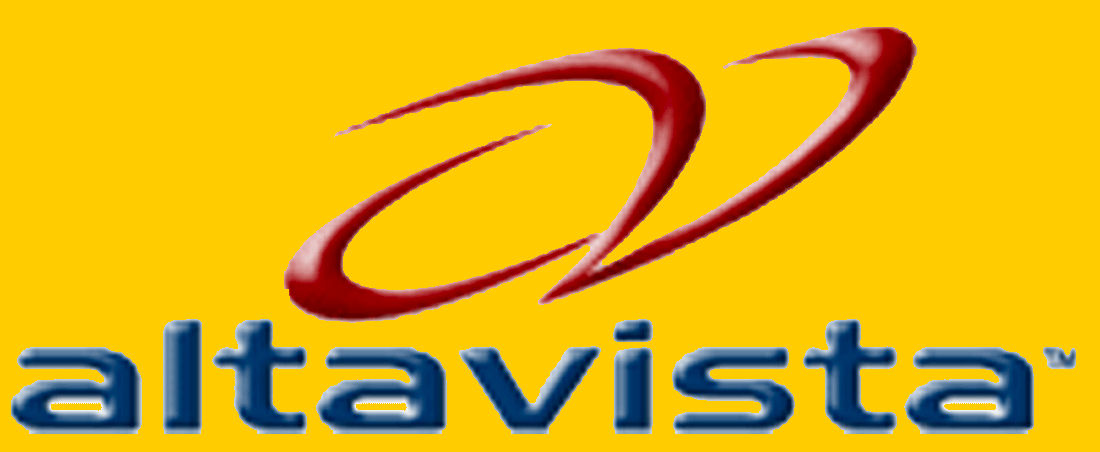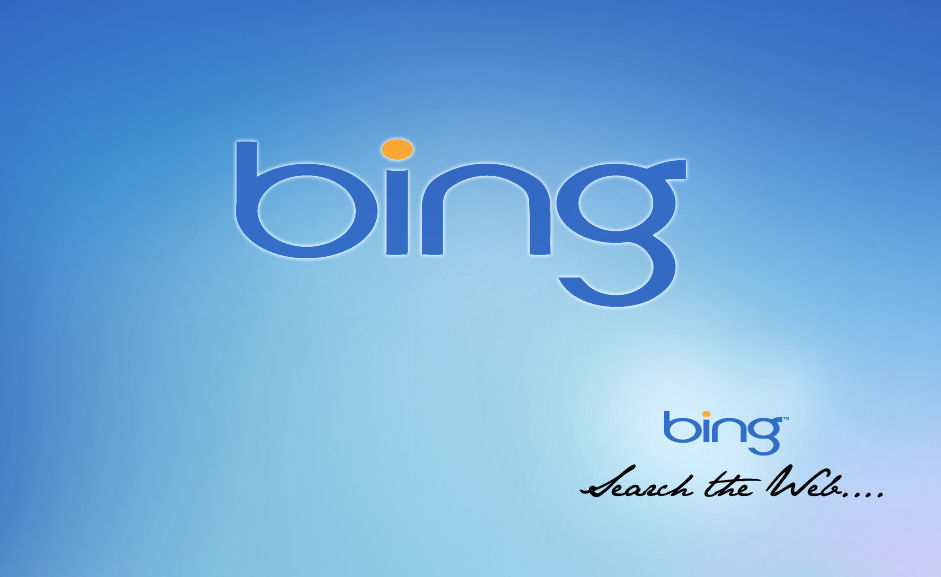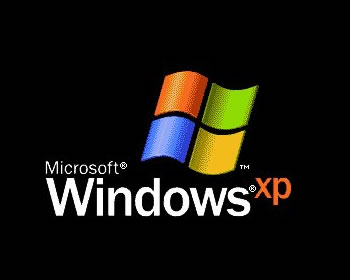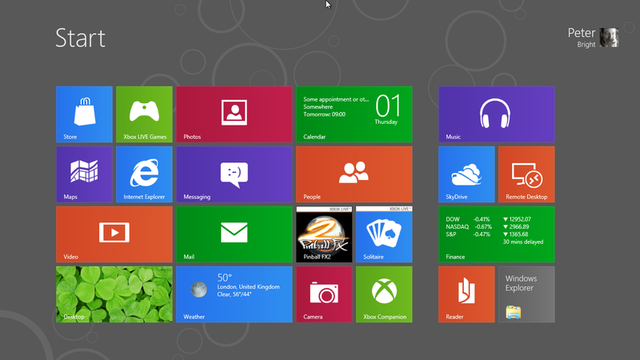|
Radschool Association Magazine - Vol 39 Page 4 |
|
Privacy Policy | Editorial Policy | Profit Policy | Join the Association | List of Members | Contact us | Index | Links |
|
Computers and stuff
Sam Houliston. |
|
Back Go to page: 1 2 3 4 5 6 7 8 9 10 11 12 13 14 15 16 17 18 19 20 Forward |
|
Web Search Engines.
A web search engine is a tool (program)
you use when you wish to search for information on the
World Wide Web. Search engines are
the Googles, Yahoos, Asks etc. and the very first tool ‘invented’
for searching on the Internet was a little program called
Archie. The
Shortly after, in 1991, two new search programs were developed, Veronica and Jughead. These were named after characters in the popular, at the time, Archie comic. These provided a search facility for the file names and titles they had stored. Veronica provided a keyword search while Jughead was a tool for obtaining menu information from specific servers.
JumpStation was released in December 1993 and used a web robot to find web pages and to build its index and was the first WWW resource-discovery tool to combine the three essential features of a web search engine, crawling, indexing, and searching.
One of the first "full text" crawler-based search engines was WebCrawler which came out in 1994. Unlike its predecessors, it let users search for any word in any webpage, which has become the standard for all major search engines since. It was also the first one to be widely known by the public. Also in 1994, Lycos was launched and became a major commercial endeavour.
Soon after, many search engines appeared and vied for popularity. These included Magellan, Excite, Infoseek, Inktomi, Northern Light and AltaVista and eventually Yahoo!. Yahoo! was among the most popular ways for people to find web pages of interest, but its search function operated on its web directory, rather than full-text copies of web pages. Information seekers could also browse the directory instead of doing a keyword-based search.
Early in 1996, the browser program Netscape, was looking to give a single search engine an exclusive deal to be the featured search engine on Netscape's web browser. There was so much interest that instead a deal was struck with Netscape with five of the major search engines, where for $5 million per year each search engine would be in rotation on the Netscape search engine page. The five engines were Yahoo!, Magellan, Lycos, Infoseek, and Excite.
Later in 1996, two blokes from Stanford University, Larry Page and Sergey Brin, were unhappy with the quality of current search engines so they started work on their own which they called Google. By 2000, Google's search engine had risen to prominence and was starting to become the preferred tool on the WWW. The company achieved better results for many searches with an innovation they called PageRank.
A David Vise has written a very informative book on the birth and success of Google and it is a very good read.
In 2002/3, Yahoo! saw the Google writing on the wall and in an effort to maintain market share, acquired Inktomi and Overture which owned ‘All the Web’ and ‘AltaVista’. Yahoo! switched to Google's search engine until 2004, when it launched its own based on the combined technologies of its acquisitions.
Microsoft launched MSN Search in 1998 but it was not accepted by ‘searchers’ so in 2004 they began to develop new search technology and in 2009 they launched their new engine which they called Bing.
In Australia, Bing hasn’t really taken off, Google is still the engine of choice to the point where it could be argued that businesses needn’t waste their time or money trying to get their sites listed in the newer, smaller search engine. However, in the US, the story is a little different. Last year Google served only 66.05% of all searches in comparison to a relatively strong 28.05% of searches served by the very young Bing. As Bing is owned by Microsoft, it is therefore the software company’s default search engine.
While Bing is still very a second choice for searching in Australia, it’s worth understanding what differentiates it from its larger sibling and is it worth small businesses paying to be seen on the engine.
While Bing is marketed as an alternative to Google, the two are more fundamentally similar than different. This makes sense when you consider that they exist to serve the same purpose and they both work the same way when deciding what to present to a ‘searcher’. Neither will tell you how they work so it is difficult for a marketing executive to decide which one to take an interest in, i.e. attempt to optimize their site for prominence in that engine's search results and/or pay to be included as an advertisement near the top of results that relate to the business. At the moment, even if Bing presented better results that did Google, the very fact that more searchers use Google than Bing is a solid determining factor for a marketer in deciding which one on which to ‘hang their hat.’
An area where opinions differ is the significance of search engines making use of (and retaining) information about you and your preferences to tailor the results and advertising presented. A few years ago CNET ran an article on this subject, considering five major search engines (Google, Bing, Ask, AOL and Yahoo), finding marked differences between the engines, with Ask looking the best for respecting your privacy and Google arguably the worst (they all do things in a different way). DuckDuckGo is a relatively new player (started 2008) that is probably the search engine of choice if you are concerned about privacy. It also supports secure connection to the site (i.e. https://duckduckgo.com) so that your search request and results are protected from inspection as they traverse the internet. Some, but not all of the other five also offer https encryption. Use https://duckduckgo.com if you want to do a search for reasons that could be misunderstood.
Amazing as it seems, a search engine works by downloading EVERYTHING on the WWW and storing it in a data base on a super computer. When you type in a topic you want info on, the engine searches its data base and when it finds what you’re looking for it gives you the web address(s) for that topic and it does all this in a fraction of a second.
When you compare how long your own computer takes to search for something on its hard drive, to how long the search engine takes to search through all the info on the WWW – at the same time as it is doing it for millions of other ‘lookers’, it really is amazing.
|
|
We gave Dad an new iPad for his birthday, did he love it??
|
|
Are Fix-It programs any good?
Lee Koo PC utilities forum
There are a lot of good fixer utilities out there, just like there are a lot of good pharmaceutical products, yet most people don't go around swallowing every medicine that comes along unless they have the sickness that the medicine is supposed to cure. Computers can be mystifying, but so can medicine and over the years that you have had a computer you would have probably developed a pretty good idea of what is "normal" with it (as you have over many years with your body) and just like your body, most computer problems display some sort of symptom. So, rule number one (with both computers and medicine) is don’t try and fix problems you don't have.
In many instances it is possible to do a web search based upon the observed symptoms (or error messages in the case of computers) and gain an understanding of what may be going wrong. With computers, the fix often requires deleting something (think surgery) rather than adding, or changing a setting in some program or other. Reading through software help sites and any reader forums discovered in your internet search will help you understand what's happening and what your choices are. You don't need to be a techie to get the gist of most of the material you'll find, and if you hit something you don't understand, look it up. So rule number two is do your research.
It well could be that each and every piece of therapeutic software you installed is the latest and greatest way to handle some problem or other. However, just like other cures, they may interact in unforeseen and unfortunate ways and, indeed, create new problems. There may even be instances where fix-it program A identifies fix-it program B as a "problem," and deletes it, or causes your system to malfunction. So rule number three is go back and look at rule number one.
|
|
Joe says to Paddy: "Close your curtains the next time you're making love to your wife. The whole street was watching and laughing at you yesterday." Paddy says: "Well the joke's on them silly buggers because I wasn't even home yesterday." |
|
Windows XP.
Windows XP is approaching its end of life, according to Microsoft, and they should know, they made it. 8th April 2014 is when support will be turned off. If you are still using it, and there’s no reason why not, it is still a very good and useful system, it is still the most used system with nearly 47% of people using a Windows operating system using XP compared to 38% of people who use Win 7. Unless you have Service Pack 3 (SP3) installed, even now, you will not get any more security updates from Microsoft. And that could be a problem.
To check if you have SP3 installed, click Start, right click My Computer, then click Properties. Look under the heading “System” it will show which Service Pack is installed on your computer. If you don’t have SP3, you should either do this:
1. Turn on Automatic Updates.
Click on Start, then Control Panel. If you get a window that says “Pick a Category”, click “Switch to Classic View” – this gives you a much better menu. When in Classic View, click Automatic Updates, the window at right will appear.
Click on Automatic, then every day, then select a time when your computer is normally on.
Click OK and you’re done.
You won’t have any more worries until 2014 when Microsoft will finally pull the pin on Windows XP – after that, you’re on your own.
or;
2. Download SP3
If you don’t want to turn on Automatic Updates (and some people don’t) then you can get SP3 this way. Microsoft hasn’t released a version of SP3 for the 64 bit version of XP so if you have the 64 bit version, don’t worry, the latest Service Pack for you is SP2. But if you have the more common 32 bit version, you should install SP3 now. When you did the system check (above) as well as telling you what Service Pack was installed, it would have told you which version of XP you had running. If “X64 Edition” was displayed under the System heading, you’ve got 64, if it didn’t say that, you have 32. If, when you checked your
computer (above) and you found that there were no Service Packs
installed on your computer, then we have some work to do. You can’t
download and install SP3 (on the 32 bit version) until/unless you have
either SP1a or SP2 installed. If you don’t have SP1a or SP2, click HERE and download SP1a When that is done, or if
you have SP1a or SP2 already on your machine, click
If you have the 64 bit version of XP, and don’t have SP2, you can download it HERE. There is also an important update for users of XP 64 bit - you can get it HERE.
Windows XP was first released on the 24th August, 2001 and was withdrawn from retail sale on the 30th June 2008. The name "XP" is short for "eXPerience."
XP users who have not downloaded any of the Service Packs would have found that support for their system ended in September 2004 and their system could be at risk, Support for users who have only Service Pack 1 or 1a ended in October 2006. Those with Service Pack 2 lost their support in July 2010.
In April 2014, all support for Windows XP, including security updates and hotfixes, will be terminated, after which, free technical support, warranty claims and design changes will no longer be offered.
What does that mean??
Even if you are happy with XP and your old computer still works OK, and you have very good anti-virus, anti malware programs, there is still a reason why you shouldn’t just keep on keeping on. Security fixes are a response to a vulnerability in the design of Windows whereby malware/viruses can find a way in that wasn't intended. You need these fixes. Conficker, one of the most serious pieces of malware in recent times, exploited such a security vulnerability. Microsoft had released a fix for this problem before Conficker started to spread, so in effect it only affected computers that didn't keep their security fixes up to date, but there were a lot of those, it even infected UK Ministry of Defence and French Navy systems.
But!!
Here are a few suggestions:
1. If you are using XP
there is a fair chance that your computer is starting to get a bit long
in the tooth. If you have any sensitive information on your machine, or
information that you don’t want to lose, make sure you do regular
backups – hard drives don’t last forever. You should be doing this
anyway, no matter what system you are using.
2. If your computer is a bit old, don’t bother getting Windows 7. To take full advantage of Windows 7’s features, you need a 1 gigahertz 64-bit processor, 2 gigabyte RAM, 20 GB available on your hard drive and a super duper graphics device. Your old machine will not be able to handle it, so either get a new one or format your hard drive (making sure you've done the backup first!) and install a version of Linux that will run well on your hardware. A bit radical, but low cost and secure. You will need help/information, lots of that via Google (or DuckDuckGo) and there may be a local Linux user group that meets from time to time (like SLUG in Sydney) where you will probably find a mix of helpful nerds and people like yourself, they will be very keen to help you. By the way, I'm writing this on an Ubuntu Linux PC.
3. The trend, at the moment, is to gravitate away from PC’s and head towards the Apple stable. There is a fair chance that once your trusty old PC falls off the perch, Apple machines will outsell PC machines – walk past any Apple store today and have a look inside, they are always full of people. Walk past the computer department in Harvey Norman, or The Good Guys or Dick Smith and compare. End of argument!!! Depending on what you want a computer to do, you have the pick of an iPad, iPhone, iMac, iSomething else and as Apple has the advantage of making both the hardware and the software – everything matches and works seamlessly.
Our bet?? - your next computer device will have the Apple logo.
|
|
Paddy says to Mick, "Christmas is on a Friday this year." Mick says, "Let's hope it's not the 13th." |
|
About a year back, Microsoft released a Service Pack (SP1) for Windows 7. If you haven’t yet downloaded it – you should!! You check whether or not you have SP1 much the same way as in XP above, click Start, then right click Computer then left click Properties. Under the heading “Windows Edition” at the top, it will show you whether or not you have SP1 installed.
Once again, the best way to get SP1 is to have your computer do it automatically – consider turning on automatic updates. To do this, click Start, then Control Panel then Windows Update, this will give you the window at right.
When you get there, click on the “Change Settings” command (arrowed) and that opens up the window below.
Fill in the window as shown, click OK and you have no further worries.
If you
are using Microsoft’s excellent and free Security Essentials virus
protection, it is
Once again, if you do not wish to turn on the Auto Update facility, you will have to update your machine manually. To do this, click Start, then Control Panel then Windows Update to bring up the top window.
You will see, above the arrowed selection, another option which is “Check for Updates.” Click this and Windows will check your computer and alert you of any updates you need, some will be Important, others Optional. Download the Important ones and select any optional ones you want.
Of course, to do all this you must be connected to the internet.
|
|
Paddy's in the bathroom and Murphy shouts to him. "Did you find the shampoo?" Paddy says, "Yes but it's for dry hair and I've just wet mine." |
|
Microsoft Fixit.
If you are running Windows XP (with SP3), Vista or 7, Microsoft has made available a free diagnostic tool that is one of the good FixIt programs. This little tool can help fix most problems you might have with your machine.
Microsoft FixIt is a program that must be downloaded and installed before you can use it. When you install it, the program checks your PC and its operating system before deciding how many of the 27 trouble-shooters to offer you so you don’t try and fix something that isn’t there. The topics include monitor, audio and printing issues, connection problems, software compatibility and similar matters.
Many Windows users will already be familiar with the Fix It buttons that are scattered through Microsoft's online support system. Clicking the button runs a script that fixes the problem without the user following what can often be complicated instructions. Many will also be familiar with trouble-shooters such as the one built into Internet Explorer, which does an outstanding job of fixing many connectivity problems. This tool puts all those into the spot.
FixIt can fix more than 300 problems and is very easy to use. You can find it HERE. |
|
Paddy shouts frantically into the phone, "My wife is pregnant and her contractions are only two minutes apart!" "Is this her first child?" asks the Doctor. "No," shouts Paddy, "this is her husband!" |
|
Windows 8.
Microsoft is soon to release their new version of Windows – called Windows 8. Popular belief is it will hit the stores in October 2012 and is supposed to be a huge departure from all their previous versions. It will probably be a ‘make or break’ decision for them as it is aimed primarily at the ‘Touch Screen’ market not at the current mouse/keyboard method of data input. This is where, in our opinion, they are going to find the going tough.
From Window 95 right up to Window 7, (17 years) Microsoft has operated much the same way. Basically, if you wanted any of those versions to do something, you clicked the Start button down the bottom left hand corner, selected a program, clicked it and away it went. Millions and millions of people all over the world got used to using Windows that way and most were perfectly happy. Those that weren’t, switched over to Apple – and in recent years, the trickle of people moving from the PC to Apple has grown into a torrent, and not only because of the way data was entered but for several other reasons.
Microsoft, which is a very large company with a bunch of very smart people, saw the Apple writing on the wall and decided that the only proverb that counted was “if you can’t beat them, join them” – so they decided to bring out Windows 8.
When it is released, this is what you will be greeted with when you turn on your Win 8 powered computer.
But!!! and there’s always a “But”…..as this is mainly a touch screen system, (you can use a mouse and keyboard – but it’s messy) if you do want to update to Win 8, this means:
My bet is people wanting to upgrade from their old Windows PC system will go to the Apple stable. MS does not make the machines that run the software whereas Apple does. The Apple machines are far easier to use, look better and combine much better with the software. Some claim that in trying too hard to support legacy software (compared with Apple) Microsoft encumber themselves with clunky stuff that looks out of place in the latest offering, this may be especially true with Win 8.
It will be interesting.
|
|
Don’t look back, you’re not going that way!!!
|
|
Scams
By now, everyone who uses the internet will have received an email similar to the one below:
"Greetings, I am writing this letter to you in good faith and I hope my contact with you will transpire into a mutual relationship now and forever. I am Mrs. Omigod Mugambi, wife of the late General Rufus Mugambi, former Director of Mines for the Dufus Diamond Dust Co. Ltd., of Central Eastern Lower Leone ……"
This is called the Nigerian Scam and we’re sure everyone is smart enough to just dump it as soon as it is received, it’s an obvious scam, but if everyone knows it’s a scam, why do they continue to send it out. The reason is, it's still a huge business. As early as 1996, these scams netted the scammers US$5 billion. Since them email traffic has increased enormously which has increased the opportunities for the scammers and while Nigeria does harbor its share of these scammers, perpetrators can be found in all corners of the globe, including the U.S. and each year they rip off hundreds of billions of dollars.
What do they say, “There’s one born every day………..”
There is now a modified version out there – so be careful because you are sure to run across it.
It all starts if/when you place a “For Sale” add on line, such as selling a painting, your vintage car, or a bike, or boat, or some furniture. It doesn't matter what you're selling, as long as it's physically large and valuable. Here’s what happens.
The scammer sends you an email like this from a Gmail/Hotmail/Yahoo (untraceable) address:
"I will like to know if this item is still available for sale?" You write back and say, yes, it is. The scammer then writes, "Thanks for the response, how long has you owned this item? Could you let me know the price in USD? I am OK with the item it looks like new in the photos I am in Asia and I’m sorry I will not be able to come to see the item in person but I will arrange for the pickup after payment has been made. I will complete all the documentation so you don't have to worry about that. Thanks"
Three key points that should make you sit up and take notice are:
1. The scammer is using a web-based email address, which is nearly impossible to trace without a court order; and 2. He claims to be out of the country; and 3. He claims that he has a friend who will pick up the item.
The scammer then says:
"My friend will be coming from Asia for the pickup, and please prepare all the export documentations for the pickup. I'm quite satisfied with the condition and price. I will be paying the PayPal charges from my account and I will be paying directly into your PayPal account without any delay, and I hope you have a PayPal account."
After you give him your PayPal account he writes back:
"I have just completed the Payment and I am sure you have received the confirmation from PayPal regarding the Payment. You can check your PayPal e-mail for confirmation of payment. a total of US$10,500 was sent, US$10,000 for the item and the extra US$500 for my friend’s expenses which I will get you to send to him via Western Union."
Here’s the sting. You get an email such as”
"You should send the $500 money to cover expenses soon so that the Pick Up could be scheduled and you would know when the Pick Up would commence, make sure you're home. I advice you to check both your inbox or junk/spam folder for the payment confirmation message."
You then receive a message claiming to be from "Service-Int PayPal.Com" which says
"The Transaction will appear as soon as the Western Union information is received from you, we have to follow this procedure due to X-Y-Z security reason … the Money was sent through the Service Option Secure Payment method so that the transaction is protected with adequate security measures for you to be able to receive your money. Your account will be credited immediately the western union receipt of $500 is received from you.
When (if) you do send off your $500 – kiss it good bye. It’s a goner!!
You would think no-one could be that silly – who would fall for that- well, believe me, hundreds and hundreds of people do.
|
|
Paddy and Mick find three grenades, so they take them to a police station. Mick says: "What if one explodes before we get there?" Paddy says: "We'll lie and say we only found two." |
|
Back Go to page: 1 2 3 4 5 6 7 8 9 10 11 12 13 14 15 16 17 18 19 20 Forward |

 name stands for
"archive" without the "v". It was created in 1990 by computer science
students at McGill University
in Montreal, Canada. The
program downloaded the directory listings of all the files on the Web
creating a searchable database of file names; however, Archie did not
index the contents of these sites since the amount of data was so
limited it could be readily searched manually.
name stands for
"archive" without the "v". It was created in 1990 by computer science
students at McGill University
in Montreal, Canada. The
program downloaded the directory listings of all the files on the Web
creating a searchable database of file names; however, Archie did not
index the contents of these sites since the amount of data was so
limited it could be readily searched manually.






